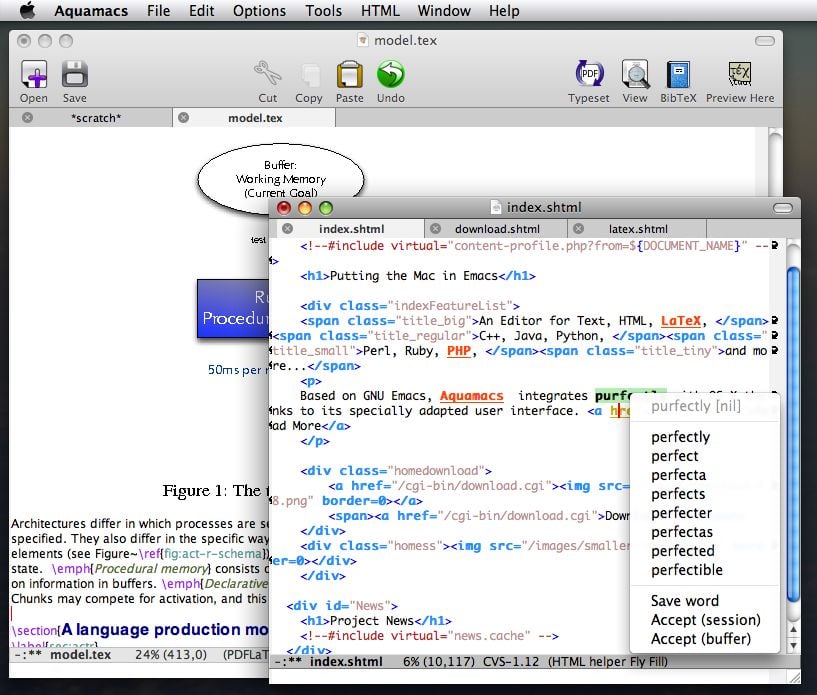

It's obvious that full-screen mode with easy switching isn't it. I'm wondering if there is a better way than spaces. Since were on the topic of application visibility and switching. It also makes it easy to switch between different programs on the Mac. Now, I'm not saying that Spaces is essential, but I this is one case where something we think is nerdy, is actually pretty main stream. Aquamacs is designed to make it easy for users to get started with Emacs.

The conclusion that I came to is that, if you replace my IDE with something like MS Word and my text editor with something else, perhaps Photoshop or Illustrator, you'd get roughly the same workflow that I have, just without the code. I, too, thought that most people wouldn't really care much for spaces, however I have noticed several of my non-technical friends using and began wondering.
#AQUAMACS CODE NUMBER OF SPACES FOR ANDROID#
I have several api docs open at any given time, eclipse for android stuff, Aquamacs ( emacs in cocoa ), potentially an Android emulator, a preview image from our designer, several browser tabs for email, roadmap, and backlog tasks and a team chat window. Aquamacs 2.4 for OSX has been designed to use Preferences.el and customizations.el instead of /.emacs Preferences.el (require 'whitespace) This is for files previously created and then opene. For web development, I find spaces essential. Aquamacs uses a mono-spaced font (Monaco) as a default, but uses the system’s variable-width font (Lucida Grande) for all text modes, including those derived from ‘text-mode’. I'm primarily a web developer, though I do frequently work on Android projects or random hacking on some python projects ( sage anyone? ). I don’t want to cause problems for these source files.I'm not sure where I stand on this, however, I'd like to provide one data point, one that I expect many HNers share. I prefer NoTabs, but sometimes I work on a project that does use tab indentation. – DrewAdams Smart inference of indentation style ‘ C-q’ to the rescue! Don’t forget it: ‘ C-q’ says “insert the next character, whatever it is” (command quoted-insert). But you just have to indulge yourself a tab from time to time – perhaps to create a file in some required format. Yes, of course you agree that TabsAreEvil. This command first moves point forward over any spaces. So How Do I Insert a Tab If I Really Have To? The text on the line after point becomes a new line, indented to the same column where point is located. You might want to set it to something other than 8 before calling M-x untabify. The tab-width variable tells Emacs how wide a tab is (more precisely, the distance between tab stops).

Do not confuse this with tab-width, which is only good for displaying existing tabs in files! If you wish to change the amount of spaces that the Tab key inserts, check out the TabStopList page. ( M-x tabify does the opposite …)ĭiscussion on whether this is a good idea: TabsAreEvil (or not).

If you want to remove tabs in an existing file, mark the whole buffer using C-x h and use M-x untabify. You may also customize the ‘indent-tabs-mode’ variable instead, obviously. emacs file: (setq-default indent-tabs-mode nil) If you want to use spaces instead of tabs when indenting, put the following in your.


 0 kommentar(er)
0 kommentar(er)
